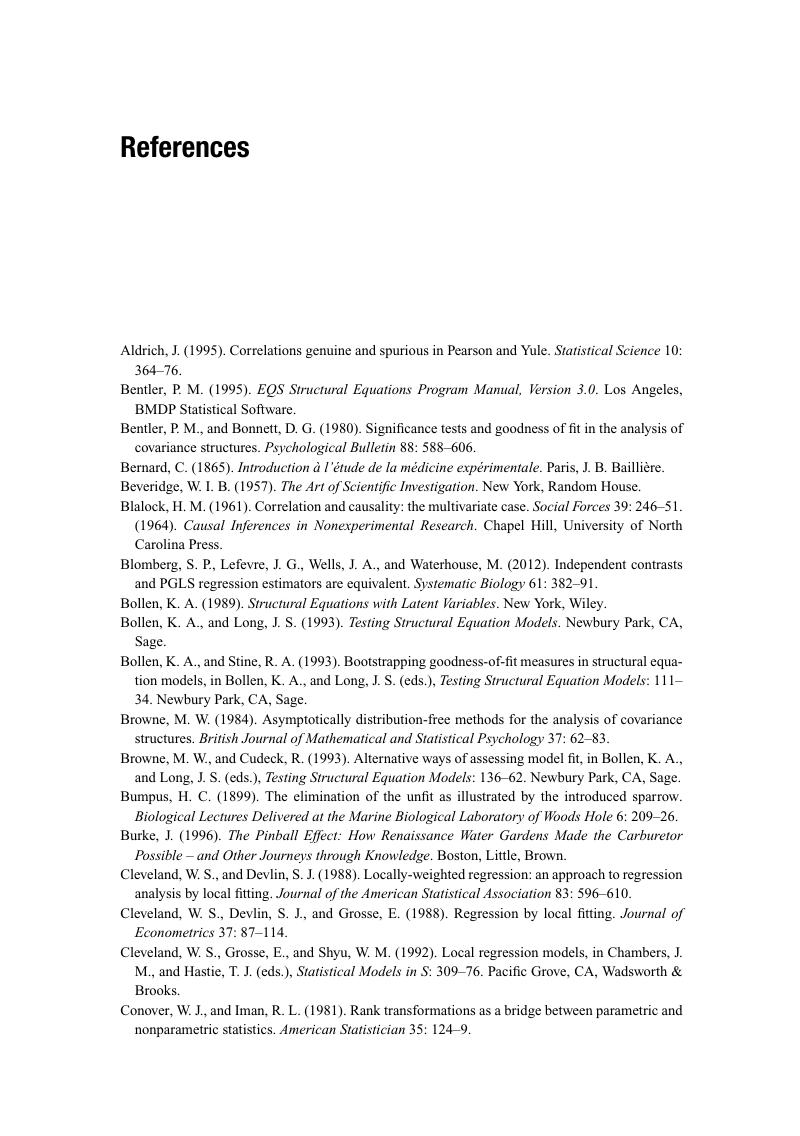 Cause and Correlation in Biology
Cause and Correlation in Biology Book contents
- Frontmatter
- Dedication
- Contents
- Preface
- Preface to the second edition
- 1 Preliminaries
- 2 From cause to correlation and back
- 3 Sewall Wright, path analysis and d-separation
- 4 Path analysis and maximum likelihood
- 5 Measurement error and latent variables
- 6 The structural equation model
- 7 Multigroup models, multilevel models and corrections for the non-independence of observations
- 8 Exploration, discovery and equivalence
- Appendix A cheat-sheet of useful R functions
- References
- Index
- References
References
Published online by Cambridge University Press: 05 April 2016
- Frontmatter
- Dedication
- Contents
- Preface
- Preface to the second edition
- 1 Preliminaries
- 2 From cause to correlation and back
- 3 Sewall Wright, path analysis and d-separation
- 4 Path analysis and maximum likelihood
- 5 Measurement error and latent variables
- 6 The structural equation model
- 7 Multigroup models, multilevel models and corrections for the non-independence of observations
- 8 Exploration, discovery and equivalence
- Appendix A cheat-sheet of useful R functions
- References
- Index
- References
Summary

- Type
- Chapter
- Information
- Cause and Correlation in BiologyA User's Guide to Path Analysis, Structural Equations and Causal Inference with R, pp. 290 - 296Publisher: Cambridge University PressPrint publication year: 2016


